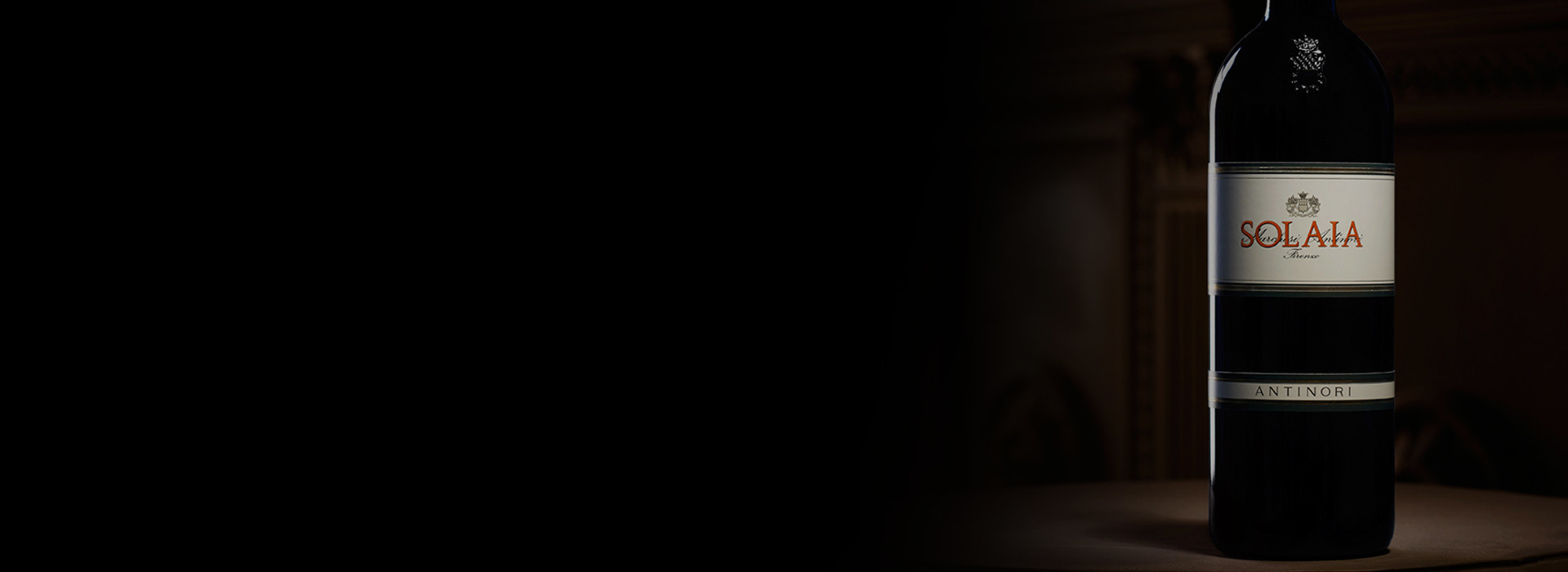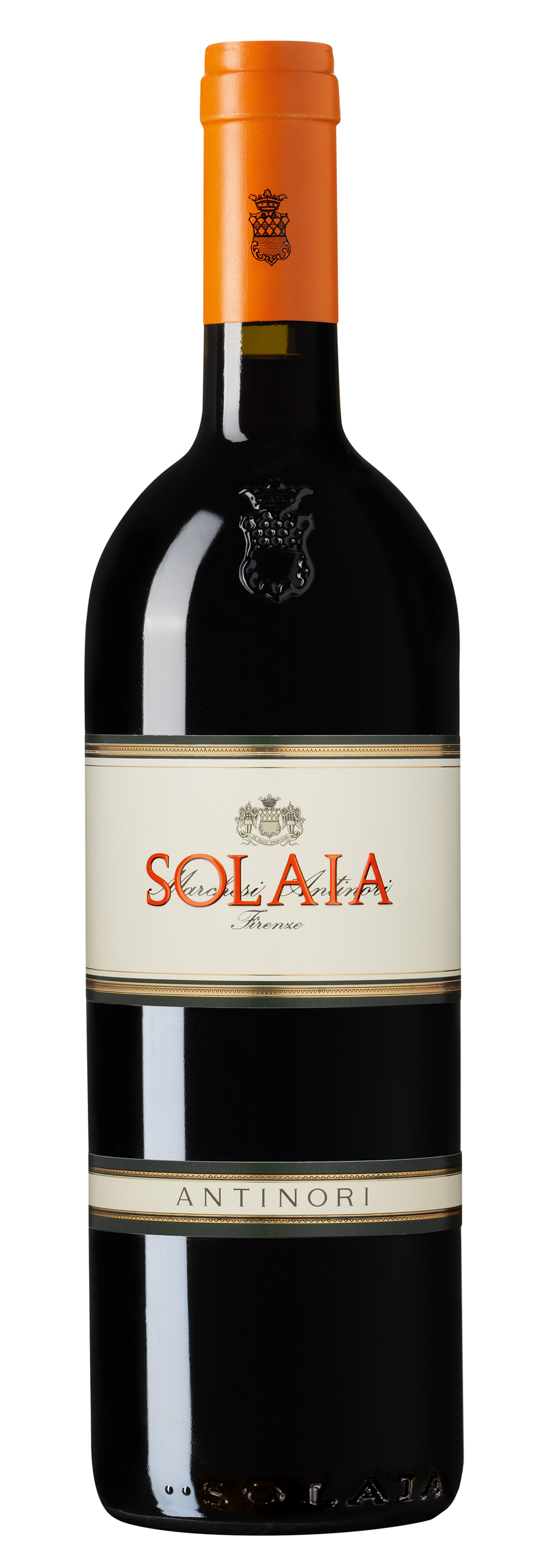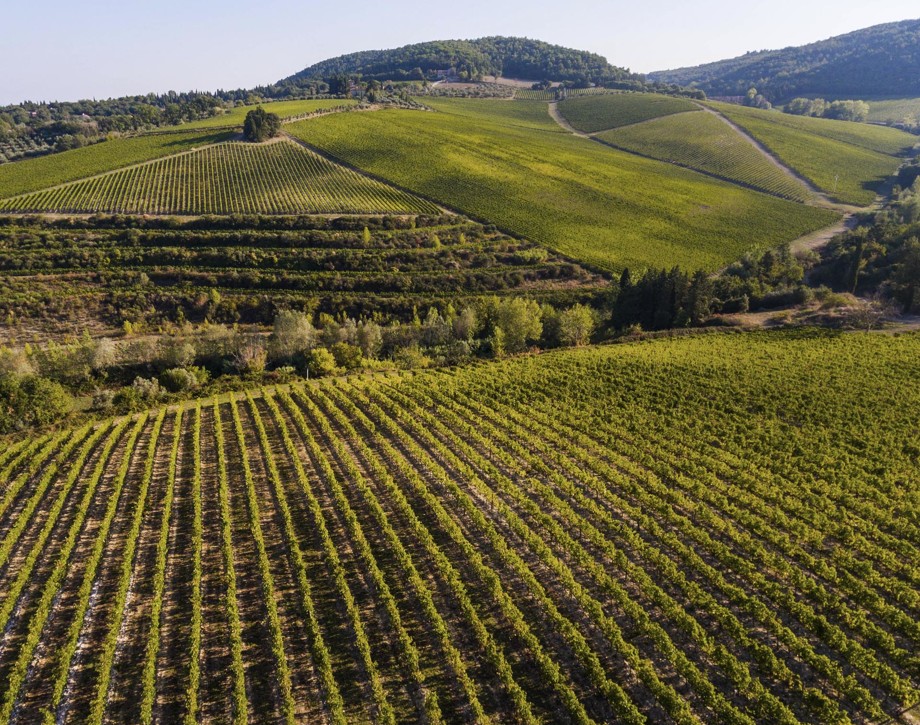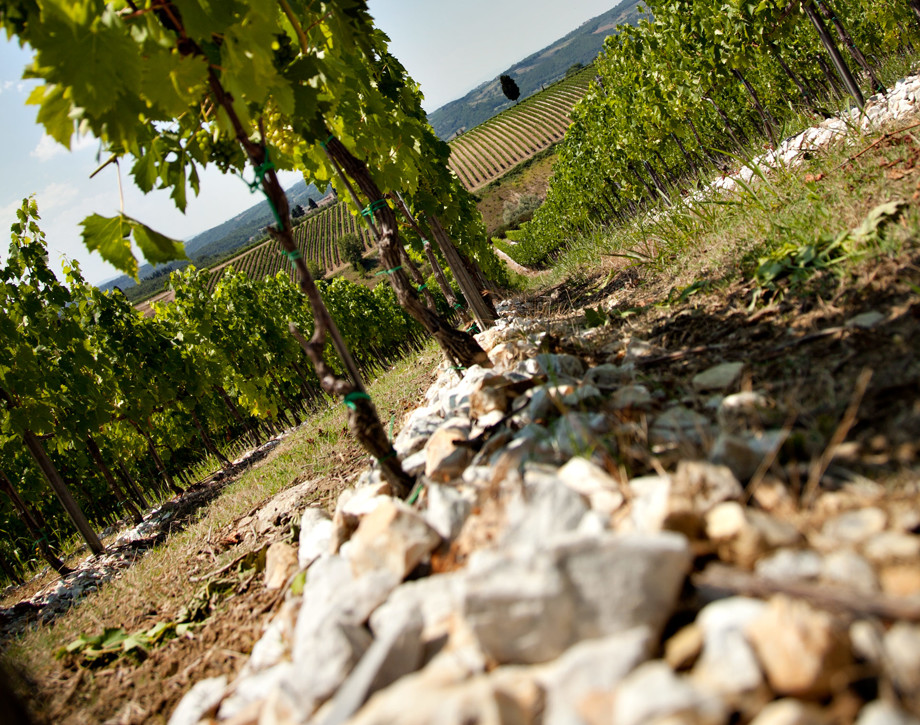Solaia

Climate
The 2013 vintage was characterized, more than any other, by careful and attentive vineyard work, first with important leaf removal operations and then with a rigorous selection of the grapes, first in the vineyard during picking, and then in the cellars. These operations assisted in giving musts of great richness in color, aromatic and with an intense expression of fruit, both factors which presage a vintage of an exceptional quality level. Once in the cellars, the grapes are delicately destemmed and the berries, before pressing, were carefully selected on a sorting table; here attention to detail was at its maximum, it is of fundamental importance that only perfect grapes end up in the 60 hectoliter (1585 gallon) conical fermenting tanks. During the fermentation and the period of skin contact, the must slowly became wine: in this phase much care was needed to maintain freshness and aroma, but without neglecting the extraction of color and a management of the tannins aimed at elegance and suppleness. Once the wine was run off its skins, it went through a complete malolactic fermentation in oak barrels to further add finesse and drinking pleasure. The barrels, all new, were coopered from French oak, and the aging period lasted 18 months. During this period the various lots, fermented separately according to their variety and the character of the individual vineyard parcels, completed their aging and are then blended together a few months before bottling.
Vinification
The winter of 2013 and the preceding autumn were characterized by above average rainfall and by temperatures which were not particularly cold, with the exception of one week during the month of February when there was heavy snowfall as well. Spring began with a climate which was much like the preceding months, determining important delays in bud burst, but despite this fact the successive phases of flowering and bud set saw normal growth and development. May and June were cool and rainy, assisting vegetative growth in the vineyard, while July and August were warm and dry, but without excessive peak temperatures, and the vines continued working, recovering a large part of the delay which had previously accumulated. Ideal weather marked the month of September and the first half of October, the harvest period – in addition to continuing warmth during the day, there were significant temperature swings between this daytime heat and evening and nighttime coolness. This assisted in bringing the different grape varieties to a full and complete levels of ripeness. Picking began during the last week of September, later than usual as a harvest. The excellent weather brought out all the quality of the Cabernet Franc, picked between September 28th and 30th, while the Sangiovese was picked during the first week of October. The Cabernet Sauvignon crop was brought to the cellar between October 7th and 16th under climatic conditions which were absolutely perfect for the quality of the fruit. Total annual rainfall: 48 inches Average daily temperatures April 1st- October: 66° Fahrenheit (18,98° centigrade) Rainfall April 1st – October 17th: 21.8 inches (564,2 millimeters)
Historical Data
Solaia is a 50 acre (20 hectare) vineyard with a southwestern exposure located at an altitude between 1150 and 1325 feet (350-400 meters) above sea level and with a stony soil of “alberese” (hard limestone) and “galestro” (flaky calcareous clay) rock. The vineyard is located at the Tignanello estate. The Antinori family produced this wine for the first time in the year 1978, and the initial blend was 80% Cabernet Sauvignon, and 20% Cabernet Franc, a formula repeated in 1979 as well. In the following years, 20% of Sangiovese was introduced and certain adjustments were also made in the rapport between Cabernet Sauvignon and Cabernet Franc until the current blend was settled upon. Solaia is produced only in exceptional vintage, and was not produced in 1980, 1981, 1983, 1984, and 1992.
Tasting Notes
A very intense ruby red with purple highlights, the 2013 Solaia shows aromas of ripe red fruit, pleasurably fresh and vibrant, accompanied by balsamic sensation of liquorice and mint. Hints of vanilla and smoke on the aromatic close fuse with an intense spiciness to create a powerful impact. The palate, initially elegant, becomes full bodied with tannins of much shape and solidity. The finish and aftertaste are quite complex with their expressive notes of black fruit and chocolate along with an excellent savor and vigor.
Awards
James Suckling 97/100 USA Daniele Cernilli 97/100 Italy Antonio Galloni 94+/100 USA Wine Advocate 97+/100 USA

The Wine
The sunniest part of the Tignanello's hillside is home to the Solaia vineyard. The very best grapes from the very best vineyard. All the rest is passion, the utmost care and research. These are the secrets of Solaia together with the finest Cabernet Sauvignon, Cabernet Franc and Sangiovese grapes from its namesake vineyard.

Climate
The 2013 vintage was characterized, more than any other, by careful and attentive vineyard work, first with important leaf removal operations and then with a rigorous selection of the grapes, first in the vineyard during picking, and then in the cellars. These operations assisted in giving musts of great richness in color, aromatic and with an intense expression of fruit, both factors which presage a vintage of an exceptional quality level. Once in the cellars, the grapes are delicately destemmed and the berries, before pressing, were carefully selected on a sorting table; here attention to detail was at its maximum, it is of fundamental importance that only perfect grapes end up in the 60 hectoliter (1585 gallon) conical fermenting tanks. During the fermentation and the period of skin contact, the must slowly became wine: in this phase much care was needed to maintain freshness and aroma, but without neglecting the extraction of color and a management of the tannins aimed at elegance and suppleness. Once the wine was run off its skins, it went through a complete malolactic fermentation in oak barrels to further add finesse and drinking pleasure. The barrels, all new, were coopered from French oak, and the aging period lasted 18 months. During this period the various lots, fermented separately according to their variety and the character of the individual vineyard parcels, completed their aging and are then blended together a few months before bottling.
Vinification
The winter of 2013 and the preceding autumn were characterized by above average rainfall and by temperatures which were not particularly cold, with the exception of one week during the month of February when there was heavy snowfall as well. Spring began with a climate which was much like the preceding months, determining important delays in bud burst, but despite this fact the successive phases of flowering and bud set saw normal growth and development. May and June were cool and rainy, assisting vegetative growth in the vineyard, while July and August were warm and dry, but without excessive peak temperatures, and the vines continued working, recovering a large part of the delay which had previously accumulated. Ideal weather marked the month of September and the first half of October, the harvest period – in addition to continuing warmth during the day, there were significant temperature swings between this daytime heat and evening and nighttime coolness. This assisted in bringing the different grape varieties to a full and complete levels of ripeness. Picking began during the last week of September, later than usual as a harvest. The excellent weather brought out all the quality of the Cabernet Franc, picked between September 28th and 30th, while the Sangiovese was picked during the first week of October. The Cabernet Sauvignon crop was brought to the cellar between October 7th and 16th under climatic conditions which were absolutely perfect for the quality of the fruit. Total annual rainfall: 48 inches Average daily temperatures April 1st- October: 66° Fahrenheit (18,98° centigrade) Rainfall April 1st – October 17th: 21.8 inches (564,2 millimeters)
Historical Data
Solaia is a 50 acre (20 hectare) vineyard with a southwestern exposure located at an altitude between 1150 and 1325 feet (350-400 meters) above sea level and with a stony soil of “alberese” (hard limestone) and “galestro” (flaky calcareous clay) rock. The vineyard is located at the Tignanello estate. The Antinori family produced this wine for the first time in the year 1978, and the initial blend was 80% Cabernet Sauvignon, and 20% Cabernet Franc, a formula repeated in 1979 as well. In the following years, 20% of Sangiovese was introduced and certain adjustments were also made in the rapport between Cabernet Sauvignon and Cabernet Franc until the current blend was settled upon. Solaia is produced only in exceptional vintage, and was not produced in 1980, 1981, 1983, 1984, and 1992.
Tasting Notes
A very intense ruby red with purple highlights, the 2013 Solaia shows aromas of ripe red fruit, pleasurably fresh and vibrant, accompanied by balsamic sensation of liquorice and mint. Hints of vanilla and smoke on the aromatic close fuse with an intense spiciness to create a powerful impact. The palate, initially elegant, becomes full bodied with tannins of much shape and solidity. The finish and aftertaste are quite complex with their expressive notes of black fruit and chocolate along with an excellent savor and vigor.
Awards
James Suckling 97/100 USA Daniele Cernilli 97/100 Italy Antonio Galloni 94+/100 USA Wine Advocate 97+/100 USA

Tenuta Tignanello
The Tenuta Tignanello estate is in the heart of Chianti Classico, in the gently rolling hillsides between the Greve and Pesa river valleys. It extends over an area of 319 hectares (788 acres), of which 130 (321 acres) are dedicated to vines. Two of the estate’s prized vineyards are on the same hillside, Tignanello and Solaia, on soils that originated from marine marlstone from the Pliocene period rich in limestone and schist. The vines enjoy hot temperatures during the day and cooler evenings throughout the growing season. The estate’s two signature wines, Solaia and Tignanello, are produced from these vineyards and have been defined by the international press as “among the most influential wines in the history of Italian viticulture”. According to Marchesi Antinori, Solaia and Tignanello are an ongoing challenge and a never-ending passion. The Tignanello estate has vineyards of indigenous Sangiovese grapes as well as some other untraditional varieties such as Cabernet Franc.

Soil
Soils originating in the Pliocene period, rich in marine fossils with veins of clay. Rich presence of calcareous rocks and marl.
















